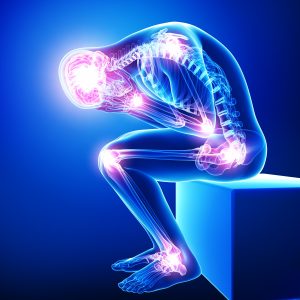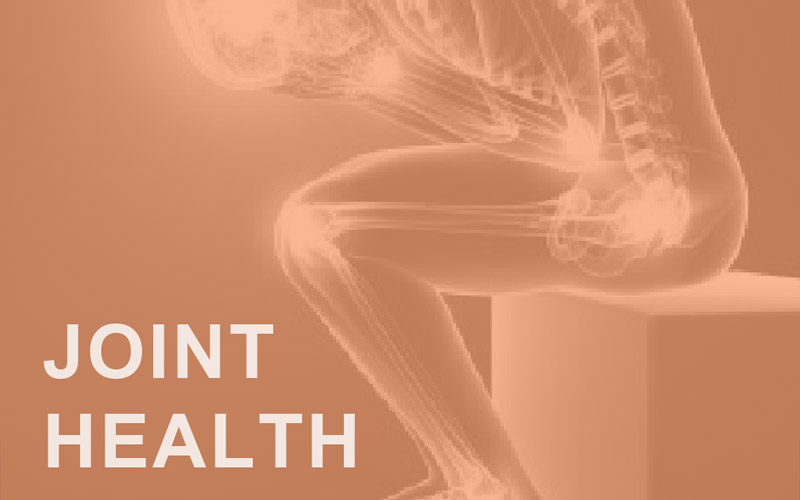Despite best-laid plans and intentions, winter holidays for many older clients involve less movement, added unhealthy food choices, plus more emotional stresses. With such holiday moods coupled with inactivity, those minor aches and slight pains that millions of older Americans experience can be exacerbated or become chronic. There are approaches fitness professionals can take with regard to joint and connective tissue “health” to minimize pain and optimize gain.
Personal Trainers should, without exception, consider key inputs from Medical Professionals for clients’ joints and medications – whether they are weak links or otherwise!

Credit: Dreamstime.com
We should also keep clients’ operational and tactical goals in forefront of exercise planning, execution, and feedback.
Benefits to Supporting Joint Health
The following might help paint a complete picture of why supporting joint health, especially in our older clients, is an important investment of time and energy.
Question 1: What is a possible operational goal for maintaining joint health and motion?
Answer: To defer or avoid a surgeon’s scalpel and/or a bionic joint.
- Invasive surgeries are quite costly to clients and society.
- There are often unintended consequences or complications for older clients.
- Results are not always as positive as the patient expects, or in fact, can be worse.
Question 2: What might an older client’s tactical goal be – in holiday seasons or otherwise?
Answer: Sustain normal activities of daily life [ADL].
- If a client has lower limb aches or pains, even an immunity-boosting afternoon walk in the park is challenging.
- A bothersome hip might hinder or cancel a pickleball contest or a golf game.
- Even carrying a heavy holiday bag of goods is a concern if elbow and/or should issues are not addressed!
Healthy Joints?
Beginning with an end in mind, Harvard Health professionals clearly state that motion is very good Joint medicine:
“The right set of exercises can be a long-lasting way to tame ankle, knee, hip, or shoulder pain. Practiced regularly, joint pain relief workouts might permit you to postpone — or even avoid — surgery on a problem joint…”
A bodily joint is a joining of two or more bones that are either rigid (skull seams) or mobile in varied ranges of motion, such as ball and socket joining (shoulders/hips) or hinge joints (knees/elbows). Our locomotion joints’ complex systems of skeletal muscle, connective tissues, synapses, and bones are proven regions for pain problems.
Useful definitions for other terms of Joint relevance are offered by our National Institute of Health.
Weak Links?
Identifying the weak links in the client’s joints and why they may have become a problem in the first place can help both programming and injury prevention. Clients’ joint issues or injuries might be the results of:
- Wear and tear (osteoarthritis – as opposed to the auto-immune rheumatoid arthritis)
- Sports or ADL injuries of bygone days
- Recent over-training in volume or intensity
- Dormant Butt Syndrome or Gluteal Amnesia (underactive glutes)
- Inactive, couch-potato lifestyle
- Normal aging
Clearly, personal trainers cannot change the past or prohibit “normal” wear and tear. Yet it is also evident that fit pros must not help to create or exacerbate joint issues.
Trainers can address items 3, 4, and 5 of the above list as life-enhancing enablers.
Other Facets of Joint Health Maintenance
Personal trainers often get asked about pain medications and dietary supplements.
“Trust yet verify” is a defensible step to evaluate one’s true need for joint pain medication. This is medical professional territory. And certainly, second opinions can be invaluable in this regard.
There are areas in which health and fitness coaches can help mitigate pain outside of pill-popping and supplementation: Could mindful breathing, stretching, motions, personal interactions, and good humor offset polypharmacy or over-the-counter pain medications?
Perhaps exercise and physical therapy may suffice!
Clients can practically question a “need” for supplements if anti-inflammatory diet practices and active lifestyles are followed. Examples of dietary supplements that have been popular are Glucosamine and Chondroitin for “joint health.”
Our older clients are demographically prone to skeletal discomfort or pain. Rare is a 60-year old (or older) client who doesn’t share episodic or chronic discomfort or pain with a personal trainer.
Millions of American adults are formally diagnosed with arthritic wear and tear on joints (or worse)! The older your client, the more you will manage rather than avert their creaky joints.
And, as the CDC reports as a sad fact of life, some states have notably higher incidences of osteoarthritis than the national average of ~22% of our American population. Implicit in these mega-statistics are lifestyle habits.
Where do you practice?
Personal trainers in Hawaii may experience the lowest client joint aches (17.2%) in our 50 states. Conversely, the following states are above 30% incidence of arthritis as an exercise factor: Alabama, Arkansas, Kentucky, Michigan, Missouri, Tennessee, and West Virginia.
USA clients with one or more of these three serious health issues also suffer with osteoarthritis at higher rates than already high averages.:
- Obesity
- Coronary issues
- Diabetes
Share this Secret!
Exercise is a client’s “Secret Sauce” for better joint health and for avoiding the weakest link downsides of aging. We can help our older clients accommodate: Snap, Crackle or Pop, enjoy ADL longer, and hopefully defer or avoid invasive joint surgery.
Dave Frost has served the fitness community as a NFPT-certified CPT since 2013, and a Master Fitness Trainer since 2019.
As a Medicare-aged baby boomer, he specializes in training those clients who intend to stay “well past forty”.
He is a former world champion in Masters Rowing and National Indoor Rowing champion for his age group. He is also a group fitness instructor for The Row House. His website is https://wellpastforty.com. Dave recently published his work: KABOOMER: Thriving and Striving into your Nineties to promote stamininety for those intending to add years to their lives and life to their years.


